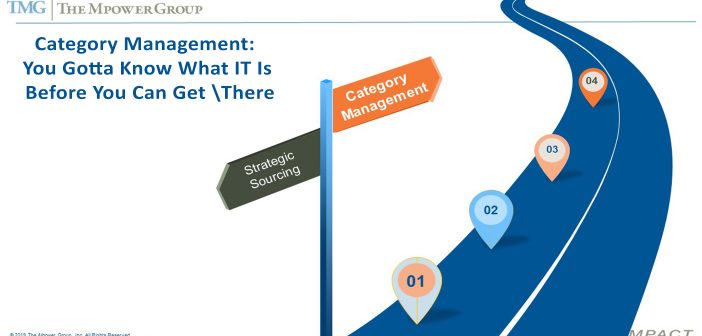From the time we called for the Death of Strategic Sourcing in 2010 to all the conferences that we speak at or host, one thing is consistently clear – people choose to define Category Management (CM) as they see fit. I’ve had CPOs tell me that they have been doing CM for a few years but when probed, it became quite apparent that they were still 2-3 years from having Strategic Sourcing fully Adopted. Respectfully, here is a simple test – if you think you’re already there, you’re probably not 😊!
Below is a model that we are currently using at a client (large utility) for the category of Engineering Services – which is a critical category in that industry. We segregated Category Management into it’s three major components – Definition, Review and Approval (that what occurs before we engage with suppliers), Strategic Sourcing (we all know what that is) and then Category/Provider Management (that is what occurs after we have sourced the category).
There are a few key messages in this model. CM is geared towards delivering Stakeholder Value Drivers (SVDs) and lowest price may or may not be part of them. Unfortunately, we don’t get to define what the SVDs are – only our Stakeholders do. That is probably one of the biggest differences between CM and Sourcing. If we don’t adopt that fundamental notion, there is no logical path to CM. What that means is that we must convince our sponsors and stakeholders that that is our new role. We must convince them that the highest impact to SVDs is actually in the other two segments which may mostly be under their purview, we have to ensure that we have the strategic competencies in our organization to focus on SVDs because that requires Consulting and Change Management competencies far more than RFPs and contracts, we have to think of far more robust and strategic Governance models to ensure accountability and ownership amongst the stakeholders, we will have to change our metrics to not focus just on running an efficient and effective sourcing operation (savings, PO cycle time, spend under purview etc.) but to actually focus on SVDs (not an easy task) etc. etc.
The second important message on this slide is that you must view this as a system and focusing on optimizing just one segment may actually sub-optimize the whole. For example, I could optimize the sourcing segment and get the absolute lowest rates possible but if I don’t have a robust infrastructure to validate effort estimates from different suppliers and normalize the level of resources each is proposing, I have probably given up more than I gained from the lower rates. Or, if I don’t have the capability to measure supplier performance towards my SVDs, what I gained in lower rates is more than offset by the loss in SVDs – and which one do you think your stakeholders care about?
Third and the more subtle message is that CM demands a much more collaborative relationship both with your stakeholders AND your suppliers. As you can tell by the above model, optimizing the non-sourcing segments requires deep engagement and involvement with your stakeholders because they must to play a significant role in that. And aligning your suppliers with your SVDs will never occur unless you have a collaborative relationship with them.
CM management is critical to the very survival of our function and I don’t think I’m being melodramatic here – after all, we did call for the death of Strategic Sourcing many years ago because of that logic. Understanding and Adopting the fundamental differences between the two is the key to success. If you would like to learn more about this topic, mark you calendar for a virtual workshop……….



